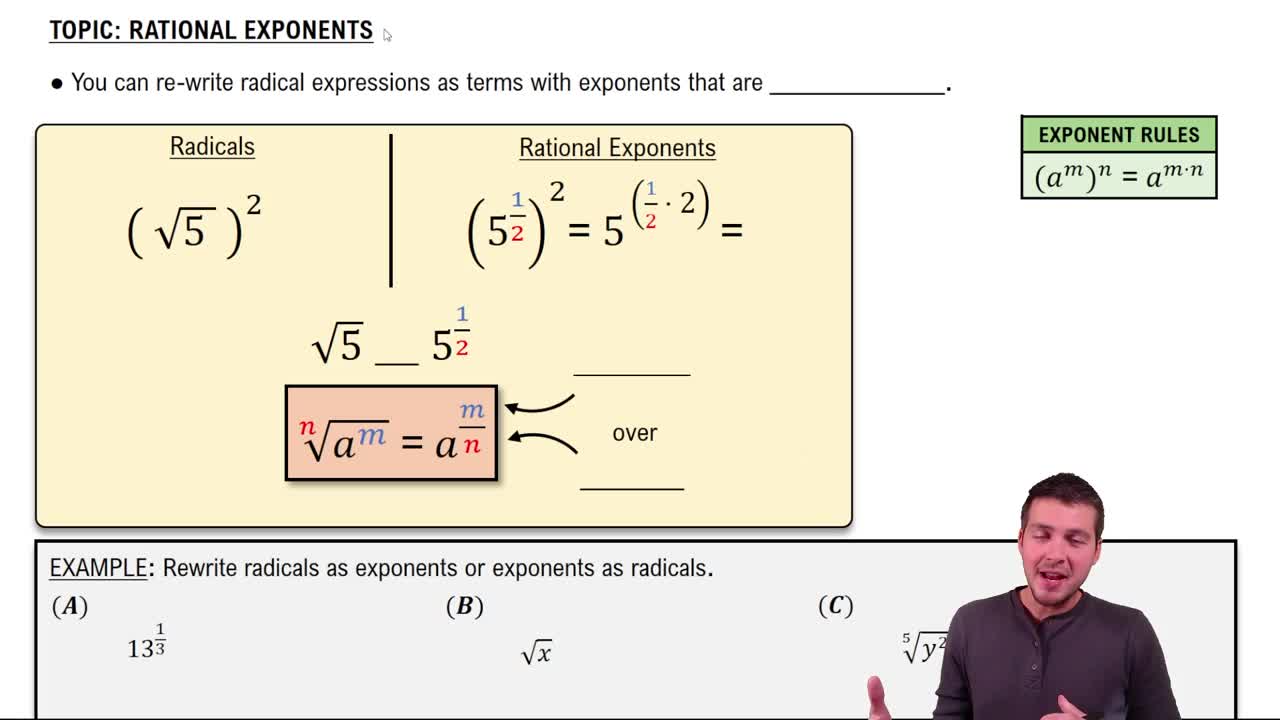Table of contents
- 0. Review of Algebra4h 16m
- 1. Equations & Inequalities3h 18m
- 2. Graphs of Equations43m
- 3. Functions2h 17m
- 4. Polynomial Functions1h 44m
- 5. Rational Functions1h 23m
- 6. Exponential & Logarithmic Functions2h 28m
- 7. Systems of Equations & Matrices4h 6m
- 8. Conic Sections2h 23m
- 9. Sequences, Series, & Induction1h 19m
- 10. Combinatorics & Probability1h 45m
4. Polynomial Functions
Zeros of Polynomial Functions
Problem 113
Textbook Question
Find all complex zeros of each polynomial function. Give exact values. List multiple zeros as necessary.* ƒ(x)=x^4-8x^3+29x^2-66x+72
 Verified step by step guidance
Verified step by step guidance1
insert step 1: Start by using the Rational Root Theorem to list all possible rational roots of the polynomial. These are the factors of the constant term (72) divided by the factors of the leading coefficient (1).
insert step 2: Test the possible rational roots using synthetic division or direct substitution to find any actual roots. If a root is found, it will reduce the polynomial to a lower degree.
insert step 3: Once a root is found, use synthetic division to divide the polynomial by the corresponding factor (x - root) to obtain a quotient polynomial of lower degree.
insert step 4: Repeat the process of finding roots for the quotient polynomial. Continue this process until the polynomial is reduced to a quadratic or until all roots are found.
insert step 5: If a quadratic polynomial remains, use the quadratic formula to find the remaining complex roots. The quadratic formula is x = \frac{-b \pm \sqrt{b^2 - 4ac}}{2a}, where a, b, and c are the coefficients of the quadratic.
Recommended similar problem, with video answer:
 Verified Solution
Verified SolutionThis video solution was recommended by our tutors as helpful for the problem above
Video duration:
9mPlay a video:
Was this helpful?
Key Concepts
Here are the essential concepts you must grasp in order to answer the question correctly.
Polynomial Functions
A polynomial function is a mathematical expression involving a sum of powers in one or more variables multiplied by coefficients. The degree of the polynomial is determined by the highest power of the variable. Understanding polynomial functions is crucial for analyzing their behavior, including finding zeros, which are the values of x that make the function equal to zero.
Recommended video:

Introduction to Polynomial Functions
Complex Zeros
Complex zeros are solutions to polynomial equations that may not be real numbers. They can be expressed in the form a + bi, where a and b are real numbers, and i is the imaginary unit. The Fundamental Theorem of Algebra states that a polynomial of degree n has exactly n roots, counting multiplicities, which may include complex zeros when real solutions are insufficient.
Recommended video:

Complex Conjugates
Factoring and the Rational Root Theorem
Factoring a polynomial involves expressing it as a product of simpler polynomials, which can help identify its zeros. The Rational Root Theorem provides a method to find possible rational roots of a polynomial by examining factors of the constant term and the leading coefficient. This theorem is often a starting point for finding both real and complex zeros of polynomial functions.
Recommended video:
Guided course

Rational Exponents
Related Videos
Related Practice



